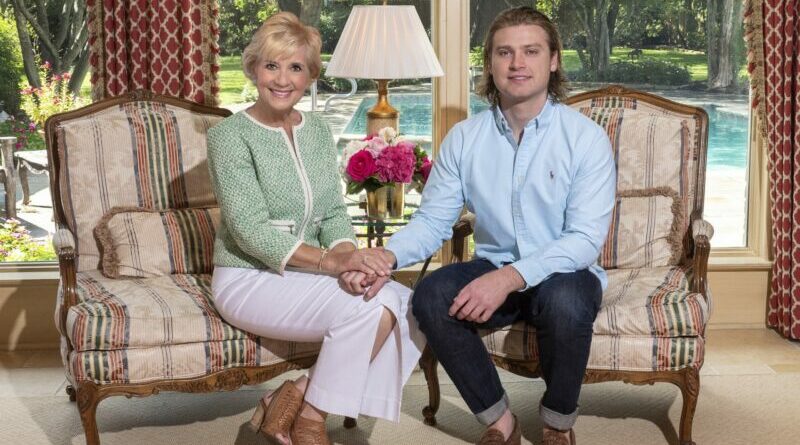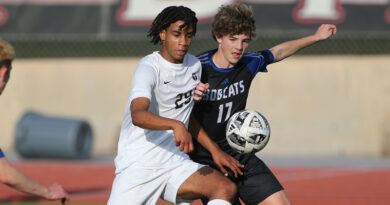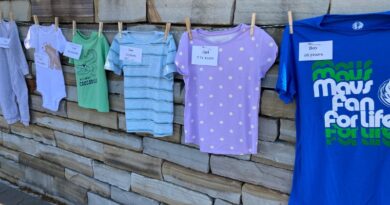Preston Hollow Person of the Year: ‘I Just Count it All a Joy’
Cindy Brinker Simmons’ philanthropy is part of her DNA
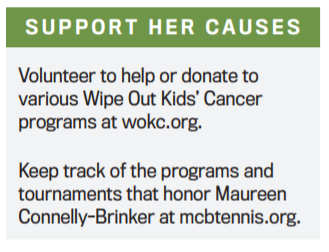
Cindy Brinker Simmons’ passion for philanthropy is pretty much genetic. But her desire to contribute to finding a cure for cancer came while she sat on a church pew, mourning the loss of her mother.
“Everything my parents did was with the thought of blessing others,” Simmons said of her parents, restaurateur Norman Brinker and former tennis star Maureen “Little Mo” Connelly-Brinker. “Giving back is just really part of my DNA because of my remarkable parents, who really focused on the importance of investing in others’ lives and making a difference — being other focused and not self-focused. I lived in a home where that was really stressed.”
Simmons’s work to combat childhood cancer and help families dealing with the rigors of pediatric cancer treatment through Wipe Out Kids’ Cancer is why People Newspapers staff chose her as the Preston Hollow Person of the Year.
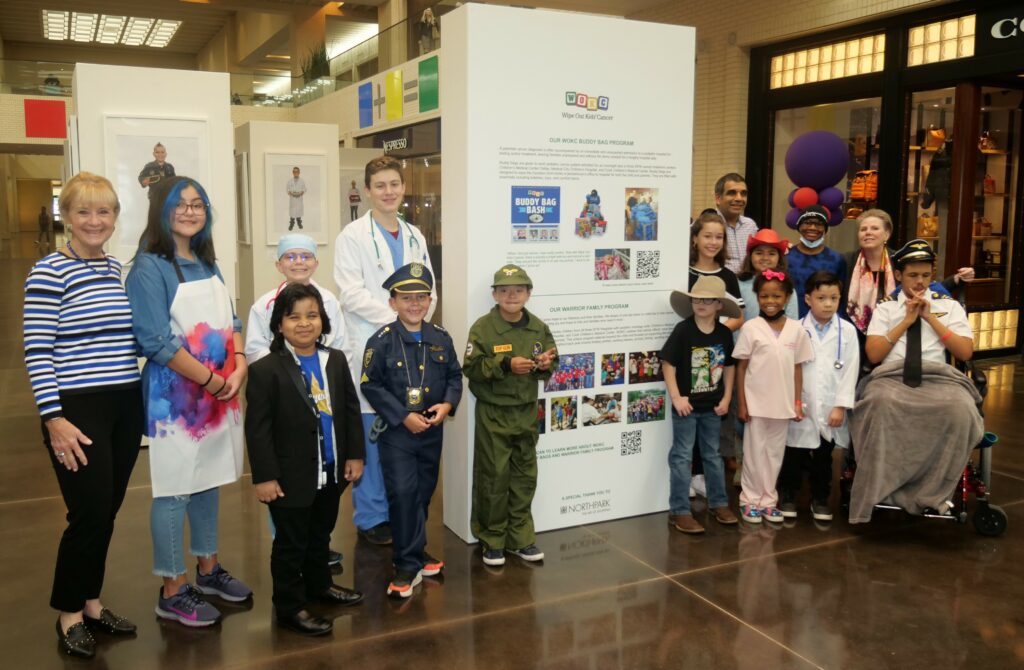
It’s also why Simmons was awarded with the Governor’s Lifetime Volunteer Achievement Award this year.
Her parents embraced a culture of giving, she said, but it wasn’t until her mother died of cancer that Simmons had a mission — despite being the tender age of 12.
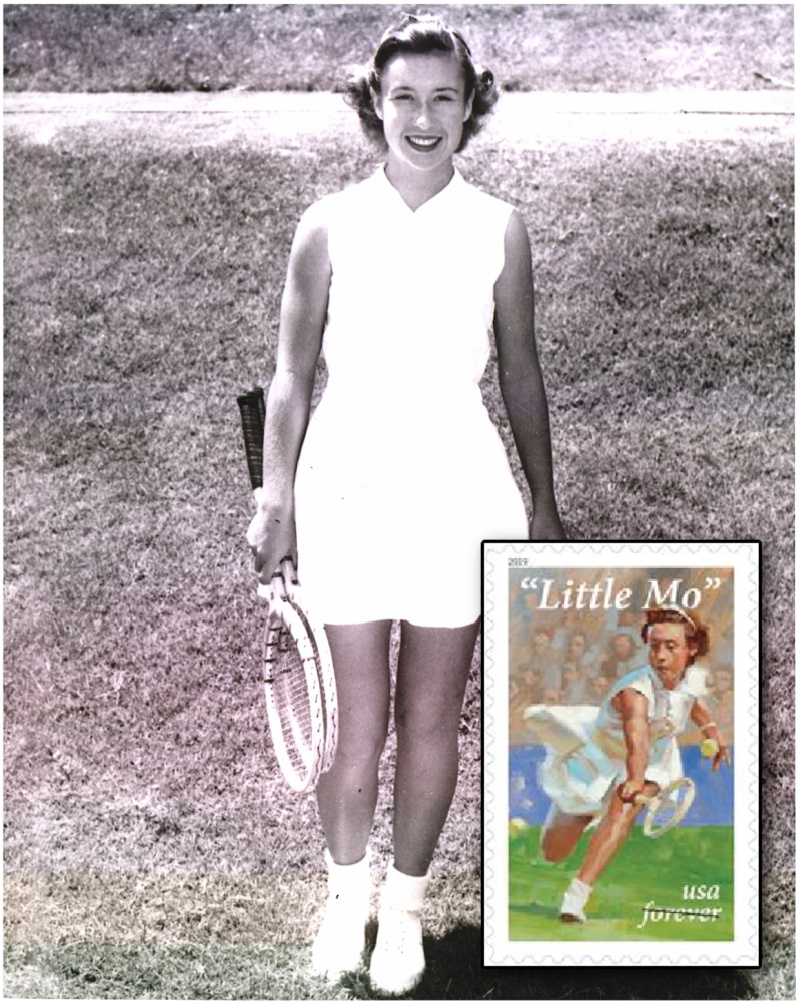
Simmons’ mother, Maureen, was a world champion tennis player before a horse riding accident cut her career short. But to get there, she had the help of generous people that helped fund her competition travel — something that spurred her to want to give back later, creating a nonprofit with friend Nancy Jeffett to promote and assist other promising young tennis players.
“She was actually number one in the world in 1952, 53, and 54,” Simmons said. “And she won Wimbledon three years in a row.”
Maureen died of cancer at 34, six months after starting the Maureen Connelly-Brinker Tennis Foundation.
“I was 12, and my sister Brenda was 10,” Simmons said. “And I remember sitting in a very uncomfortable pew at my mom’s funeral, between my dad and my sister, so angry — so heartbroken, just so confused … it was such a loss for our family.
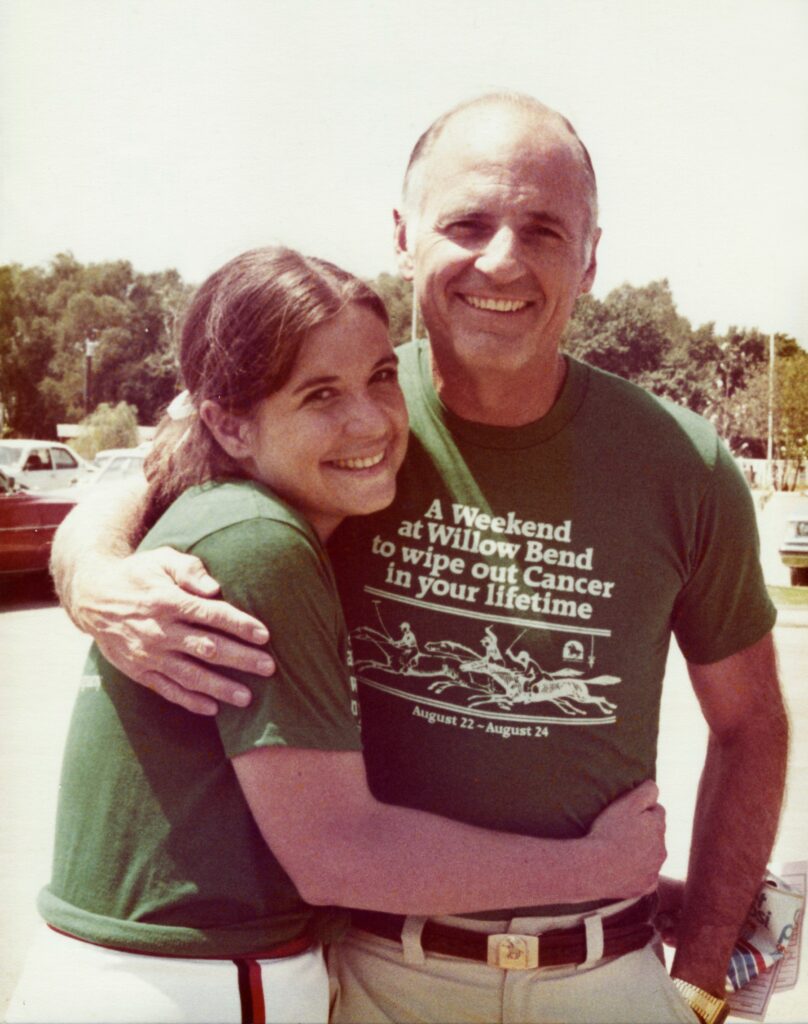
“I sat on that pew as a preteenager and I just thought that some day I’m going to do something to halt that scourge of a disease that claimed my mom’s life at age 34 — and I think that seed was planted in my head because I saw my parents helping so many people.”
These days, Simmons and her sister not only honor their mother by continuing to support junior tennis through her foundation, but also their parents’ spirit of giving through a variety of philanthropic endeavors.
“My dad said to me, ‘You know, money only allows you really two things: It allows you some freedoms and some options,’” Simmons said of her late father. “But the greatest joy of having a few nickels to rub together is that you can give them away.
“It’s the joy of giving them away, and I just count it all a joy.”
Excerpts from our extended conversation with Cindy Brinker Simmons follow.
PN: How does it feel to be named Person of the Year?
Simmons: I’m just so touched so honored that you all thought of me. I mean, it’s just part of giving back is just really part of my DNA because of my remarkable parents — they really focused on the importance of investing in others lives and making a difference, and of really being other focused and not self-focused. I lived in a home where that was really stressed. So my sister Brenda and I saw that everything my parents did was with the thought of blessing others. It really almost brings me to tears.
PN: Tell us about your parents — what drove them to philanthropy and how did it shape you?
Simmons: I don’t know if you know this, but my mom was a big tennis player back in the 50s. She was a world champion tennis player. She was actually number one in the world in 1952, 53, and 54. And she won Wimbledon three years in a row. She was the first woman to ever win the calendar Grand Slam, which is winning all four of the majors in one calendar year. She was the first woman and still the only American to do that and only five players in the history of tennis have accomplished the calendar Grand Slam.
“I sat on that pew as a preteenager and I just thought that some day I’m going to do something to halt that scourge of a disease that claimed my mom’s life at age 34.”
They called her Little Mo, her nickname was Little Mo, named after the battleship USS Missouri — a very famous sports journalist at the San Diego Union-Tribune — Mom lived in San Diego — Nelson Fisher, this very, very well-known, distinguished, esteemed tennis journalist, nicknamed her Little Mo. But sadly, she died when she was 34 of cancer and I was 12, and my sister Brenda was 10. And I remember sitting, in a very uncomfortable pew at my mom’s funeral between my dad and my sister — so angry, so heartbroken, just so confused that this remarkable woman — this woman such sparkle and joy, as a matter of fact, my dad said when she walked into the room, people just turned their head because they knew someone special, someone radiant had just walked into the room and my dad just I adored my mom. It was such a loss for our family and so I was just so sad, heartbroken.
I sat on that pew as a preteenager and I just thought that some day I’m going to do something to halt that scourge of a disease that claimed my mom’s life at age 34 — and I think that seed was planted in my head because I saw my parents helping so many people.
My mom was a teenager and was number one in the world. And then at 19 she had a horseback-riding accident that abruptly stopped her career — it was over within seconds. So after that, she no longer played tennis, but she had a passion to give back to the sport that meant so much to her.
She was raised by a single mom in the 1930s – her parents divorced when she was four, and that was kind of unheard of back in those days. So they were living with my grandmother’s aunt just to make ends meet. They certainly didn’t have any resources to fund Mom’s promising tennis career. So when she was 13 or 14, she was winning these local tournaments, and fortunately, by God’s grace, there was a group in San Diego called the San Diego Tennis Patrons, and they funded mom’s travel expenses. So she was able to compete along the west coast. Then she was able to compete at the US Open and she won the US Open when she was only 16.
She recognized that if those patrons had not been so kind and so generous to her, she would just be another good player on the public courts of San Diego. And there are a lot of good players on the public courts of San Diego, because California is one of the best, has always been one the best tennis states. So after her accident and she and my Dad married and we moved as a family, Dad was in the restaurant business. And when he was with Jack in the Box we moved eastward to develop Jack in the Box, because in those days to franchise, if you literally had to go to those places.
We ended up in Houston, but then he decided he wanted to pursue creating restaurants. So we moved to Dallas and when we moved to Dallas, it was like the 1960s, and Mom met a woman named Nancy Jeffett, and they decided that they wanted to start a tennis foundation to help develop junior tennis. The Maureen Connelly Brinker Tennis Foundation was named after her, and incorporated in 1968, so we’re over 50 years old now.
So that was just one example that my mom dedicated herself to giving back to the sport that she loved, that blessed her with travel and meeting people and being able to compete on the international stage because of the generosity of others.
Mom was a remarkable woman who just happened to be a very good tennis player and that’s how my friends and I saw my mom. And then there’s my dad, who I adored and he passed away in 2009, and his life was centered on giving back. Both my parents taught Brenda and me that there is such joy in giving and there is such a blessing in serving others.
PN: Tell us more about your dad.
Simmons: He was involved in many charities —from medical to children’s charities, to the arts to hospitality. I mean, he once said to me, ‘You know, money only allows you really two things: It allows you some freedoms and some options. But the greatest joy in having a few nickels to rub together is that you can give them away.’ I just count it all joy when I can help other people, you know. And so because of my Dad, who was an absolutely living, walking, breathing and beloved example. I mean, he was known nationally and had a successful career in the restaurant business, and he was so beloved as a living, breathing, walking, beloved example of philanthropy. So when you are in that kind of environment growing up, I think it’s in your DNA.
“He once said to me, ‘You know, money only allows you really two things: It allows you some freedoms and some options. But the greatest joy in having a few nickels to rub together is that you can give them away.’”
And I would say it’s important to say this: If you’re talking about me in an article, I have a very strong faith. I have a very strong relationship with my Lord and Savior, Jesus Christ, and I believe as my family believes that serving others is a calling. It really is the calling for all of us. And the Bible says that God is the father of compassion and the God of comfort and that God Comforts us in our troubles so that we can comfort others in their troubles because of the comfort we received from God.
I lost my mom when I was 12, and then 33 years later my husband, my beloved husband, the love of my life. My soul mate was diagnosed with cancer in 2002. So cancer has invaded the inner sanctum of my home on many occasions. And so my son, William, was 6 when sweet Bob was diagnosed with cancer. And so we had an amazing three-year journey with cancer and then he was called home to be with the Lord in 2005. So even though my life has had suffering, I’m called to help others.
PN: What was your first foray into philanthropy like? How did Wipe Out Kids Cancer get its start?
Simmons: When I came back from college, I was able to work at a country club called Willow Bend Polo and Hunt Club — it’s not around anymore, but it was a really special place in Plano in the 70s, 80s, and 90s. I worked at the club and it was really an equestrian center, but it was also a country club — there were polo matches and lots of horse shows, and we had tennis courts and racketball courts and a really cool restaurant.
And it was a great place to make good on that promise I made when I was 12 years old to just try to do something. And so what I did in 1980, was a fun series of events over a weekend at the club. I mean, it was so organic — we had a dance marathon, a tennis tournament, a swim marathon where people had pledges per lap swam, a bake sale … I expected to raise $2,000 – we raised $6,000.
“It was a great place to make good on that promise I made when I was 12 years old to just try to do something.”
And the next year, we did the same thing and we just kind of added on and added on. And then in three years, we raised $43,000 for the American Cancer Society in Collin County. Then we decided in 1983 to incorporate. So today we’re 42 years old — and we’ve really come quite a long way. We have three full-time people working and we’ve raised millions.
PN: What does Wipe Out Kids Cancer do?
Simmons: We really do three things. First, we raise funds for novel pediatric cancer research. And what that means is we look at very innovative research projects that many times would never get funded because maybe they involve a smaller population of children with cancer or maybe the hospital’s decided that’s not the direction they’re going, but we find very, very innovative, groundbreaking, and what we believe it’s called in medical terms novel pediatric cancer research. And we fund those projects because we have a very strong vetting process. So we look at really, really good projects, and we hope and expect that those researchers will take our seed money to prove efficacy and effectiveness, and then be able to resubmit their projects to large grant organizations
So, over 42 years, just on the research side we’ve raised over $7 million in seed money, but that seed money has yielded over $22 million in additional grants. So altogether, you could say, we’ve helped raise about 30 million dollars collectively from our seed money and then the grants that were received.
“So, over 42 years, just on the research side we’ve raised over $7 million in seed money, but that seed money has yielded over $22 million in additional grants.”
Then what we’ve also done is we’ve added what we call social engagement programs. The last thing you expect is to hear your child has cancer. I think those are some of the most haunting words in the English language. And so what happens is these families go directly to the hospital. They don’t go back home. They don’t collect their belongings. So any child that goes to one of three pediatric cancer hospitals in North Texas gets a Buddy Bag — and it’s filled with food coupons, toys, all sorts of toiletries. So it’s both for parents and for children. The Buddy Bag is medicine for their soul because, you know, they’re just shocked. Their world is spinning and they’re trying to put the pieces together.
And then our third is our Warrior program, where we recognize cancer not just affects the child that’s diagnosed with cancer, but the entire family. So we have all kinds of fun activities during the year — of course, COVID was an off-year for us — but we have tickets to sporting events, to the Ice Capades, we do fun fishing camps. We send them to a camp in Maine in the summer — the whole family goes and enjoys a week at camp.
AutoNation does a Christmas party for these kids — we get a wish list for the child and the siblings. We even had the party during COVID at the BMW Dallas location on Lemmon. We give them Warrior baskets chock full of gifts for the child, and gift cards and gifts for all of the family and the siblings. And then they get to watch a movie because the BMW dealership has a circular parking lot that goes up, up, up, and at the ceiling, we’re going to have a drive-in movie with popcorn and everything. This is gonna be so much fun.
That’s what I have done for 42 years and that was built, or that was established because of the loss of my mom and this hole in my heart that no EKG will ever detect, that made me just want to do something to give back.

